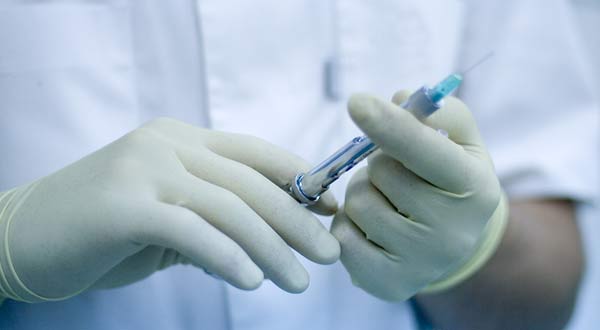Educating Teens, Parents May Reverse Lack of Vaccinations

Many teenagers don't receive the vaccines they need, but educating physicians and parents could help reverse the trend, a new study suggests.
Researchers from the Centers for Disease Control and Prevention (CDC) looked at vaccination rates from 2006 to 2009 for three vaccines — tetanus-diphtheria-acellular pertussis, meningococcal conjugate and human papillomavirus — in teenagers 13 to 17 years old.
While vaccinations rates have improved since those vaccines were first recommended in 2005, researchers found vaccination rates were lower than the 80 percent objective. Adolescent girls, in particular, weren't being vaccinated against the human papillomavirus, a virus that is known to cause cervical cancer.
Part of the problem is that physicians aren't administering all the recommended vaccinations, said Shannon Stokley, an epidemiologist with the CDC.
"This was the first time where we've reported what coverage could be, had providers been able to administer all the vaccines during the same visit," Stokley said. "Coverage could be much higher. We know adolescents came in and got a vaccine, they just didn't get all the vaccines they needed."
Coverage could have been higher
The study's data came from the National Immunization Survey-Teen, which uses random phone calls to contact parents of tens of thousands of adolescents. The parents provided contact information for health care providers, who then filled out a survey detailing the types of vaccinations they administered.
Sign up for the Live Science daily newsletter now
Get the world’s most fascinating discoveries delivered straight to your inbox.
From 2006 to 2009, tetanus-diphtheria-acellular pertussis (Tdap) vaccination rates improved from 11 percent to 56 percent, and meningococcal conjugate vaccination rates improved from 12 percent to 54 percent. In girls, the first vaccination for HPV improved from 25 percent to 44 percent. Among girls who received the first HPV shot, nearly 68 percent received all three recommended doses.
While that improvement is substantial, physicians could have done much better, Stokley said. If doctors had administered all the recommended vaccines during the first visit, "coverage would be over 80 percent for tetanus-diphtheria-acellular pertussis and meningococcal conjugate, and almost 75 percent for [the first of three doses] of the HPV vaccines," she said.
When asked why the tetanus booster and the meningitis shot weren't administered, parents listed a lack of knowledge about the vaccines, and a lack of doctor recommendation as the top two reasons. For reasons why their teens did not receive the HPV vaccine, parents said their teenagers weren't sexually active, or they didn't know enough about the vaccine.
The study shows that health care providers have an opportunity to increase vaccination rates in adolescents, said Dr. Paul Offit, chief of infectious diseases at Children's Hospital of Philadelphia. "Coverage is increasing, but clearly more can be done, especially for HPV," he said.
Doctors and parents
Physicians are often reluctant to contradict parents who don't want vaccines for their children, Offit said.
"We don't want parents to dislike us," he said. "We have to be more passionate it about when they choose to not get a vaccine."
Those parents who choose not to get the HPV vaccine, in particular, are making a choice "to put your child at risk of cancer," Offit said. "It's a terrible decision. We have to be able to say that."
"Anyone who is educated about [the HPV] vaccine would get it every time," Offit continued. "The data were solid that it's going to prevent infection, and because it prevents infection, it's going to prevent cancer."
The researchers said increasing opportunities to receive vaccines, simultaneous administration of vaccines, physician endorsement of vaccines and parental education about vaccines could help push the vaccination rate among teenagers over the 80-percent goal.
"Some parents they may not realize that vaccinations are recommended for adolescents," Stokley said. "Increasing knowledge … is something we can do to increase coverage levels."
Health care providers could develop educational materials specifically targeted at different parent demographics, Offit said. "We need to learn what kinds of presentations are able to convince parents — what works best for specific groups," he said.
Pass it on: Vaccination rates among teenagers have improved in the last few years, but more work is needed to educate parents and physicians about the need for vaccines during regular visits to the doctor.
This story was provided by MyHealthNewsDaily, a sister site to LiveScience. Follow MyHealthNewsDaily on Twitter @MyHealth_MHND. Find us on Facebook.
Measles has long-term health consequences for kids. Vaccines can prevent all of them.
100% fatal brain disease strikes 3 people in Oregon









